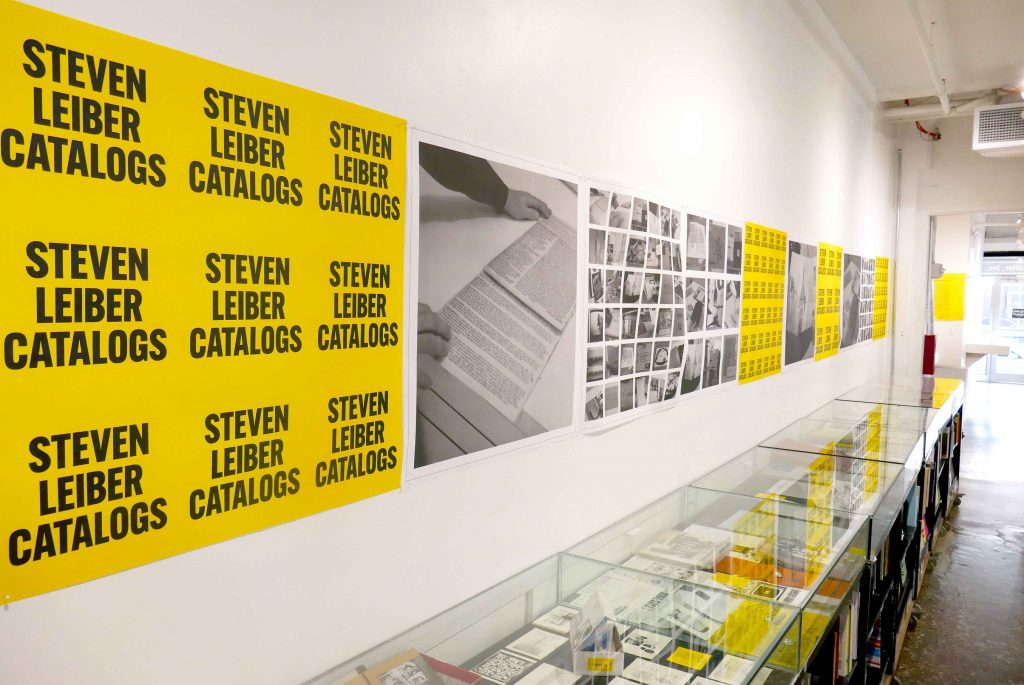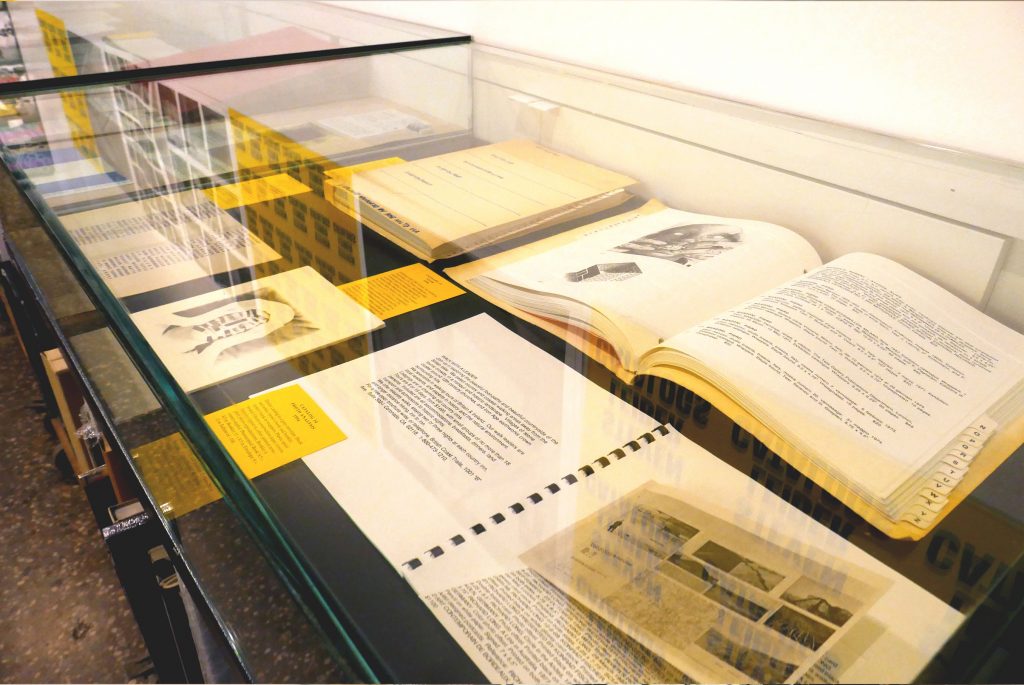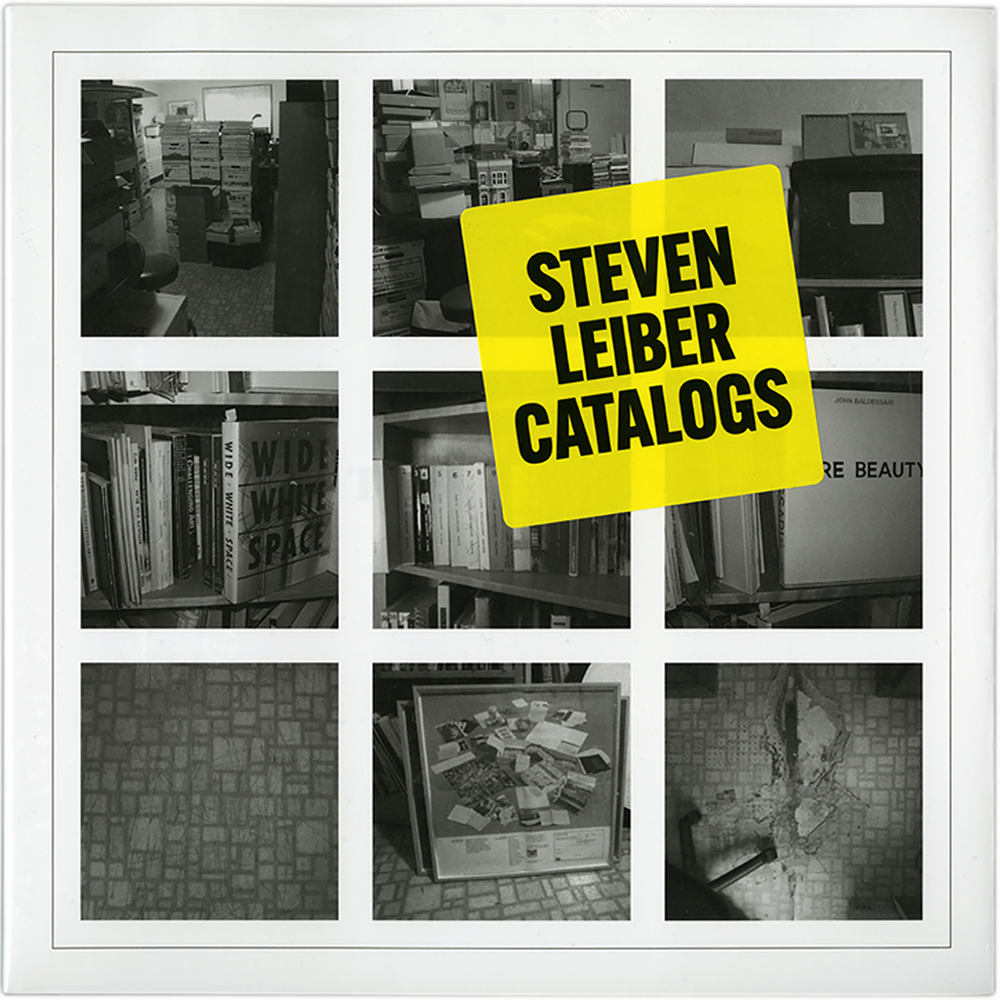Steven Leiber (1957–2012) was a pioneering art dealer, collector, and gallerist, focused on the dematerialized art practices of the 1960s and 70s. As an expert in the then-nascent field of artist archives and ephemera, in 1987 he opened Steven Leiber Basement. He was an important resource for numerous scholars, curators, and other enthusiasts, with a focus on the integral role of ephemera and documentation within conceptual art and other avant-garde movements. Inventory Press and RITE Editions have published Steven Leiber Catalogs: across 252 pages, this book documents the full set of 52 dealer catalogs produced by Steven Leiber between 1992–2010. His reputation spread via these unique volumes that paid homage to historic publications and multiples, including Wallace Berman’s Semina journal and the exhibition catalog Documenta V (1972), and included works by John Baldessari, Lynda Benglis, Ray Johnson, Lucy Lippard, Allan Kaprow, Yayoi Kusama, Claes Oldenburg, Lawrence Weiner, and many more.
Designed by IN-FO.CO, and inspired by Leiber’s often humorous borrowing for his catalog designs, the book’s format is closely based upon Sol Lewitt’s Autobiography. The list of contributors is long, and includes Ann Butler, Christophe Cherix, Marc Fischer, Adam Michaels, Tom Patchett, David Platzker, Marcia Reed, Lawrence Rinder, and Robin Wright.
David Senior, Head of Library and Archives at San Francisco Museum of Modern Art (SFMOMA), and editor of the book, and we talk to him about the process of distilling Leiber’s work.
An exhibit of Steven Leiber Catalogs is on show at Printed Matter New York through December 7, 2019.
¤
MATTEO COSSU: You’ve now organized 2 exhibitions of Steven Leiber’s dealer catalogs — the first in San Francisco at the San Francisco Art Book Fair, and now a second, more comprehensive exhibition at Printed Matter in New York — are there any particular catalogs of Steven’s that stand out to you, and why?
DAVID SENIOR: Throughout his career, Steven Leiber created contexts in his catalogs to tell the history of artists’ publications. In doing so, he also became a very accomplished art historian of the conceptual period and other movements emitting from the neo-avant garde of the 1960s and 70s. Part of this story and one that he became associated with through his catalogs, was the degree that artists and publishers created dynamic alternative distribution channels for art works in various media. I think the catalogs that stand out to me are ones where he doubled-down on that sensibility. For one, Art on Tape: Not by Nam June Paik, he had faxed assorted colleagues descriptions of publications and asked that the colleagues call his answering machine and leave a message by reading the faxed messages over the phone (audio links here). These phone messages were then transferred onto a cassette tape that became the sales catalog.
Gestures like that are remarkable for their ingenuity, but also the amount of labor that went into production. Other catalogs that stand out to me are the ones where the labor to craft, produce and distribute is clear and truly impressive. Often, they involve little handmade bits and flourishes that make each one kind of unique.


Can you tell us about Steven Leiber as a person?
I had some contact with Steven before he passed away, but many others involved with this project had much closer connections and I learned a lot from them. People like Robin Wright and Adrienne Fish in San Francisco, and other dealers, curators, and librarians have relayed to me a lot of the details of his process and business. His attention to detail was very well-known and his interest in getting all the facts straight about works that he was dealing and describing was a big part of his practice. He was always on the chase for special materials, traveling around the world to find new works and collections. He was very generous with his time in regards to the curious who visited him at Steven Leiber’s Basement and the students that he had at the California College of Art. He was in close contact with scholars, curators, librarians and collectors through his business and so many people around the world grew to rely on him for details about materials in their own collections. I found a note once in the files of a collection at MoMA Library that said, “Steven Leiber will let me know what this is…” and I would say that he had that role for a lot of people, as definitive source of information. We solicited a lot of colleagues and friends for comments about their experiences with Steven as a way to add some biographical detail to the book. This is something I really learned from and am grateful for all the people that submitted texts to us. I think this adds a lot to the publication.

How much of his appropriation and replication in his catalogs was a homage to artists, and how much of it was an effort to add a layer of playfulness to the natural human instinct of collecting and cataloging?
Catalog by catalog, I think that distinction varies. There are some — like the “Live in Your Head; When Attitudes Become Form” or the Documenta 5 catalogs, which were both iconic exhibitions and experimental catalogs curated by Harald Szeemman — that are really close facsimiles to the original and there is rigor there in the level of preciseness with the replication. With some others, like the Paik tape that I mentioned or another where he staged artwork for sale in his grandmother’s home and took pictures for postcards that he called his Living Room Postcards, these seem more playful in the sense of adopting the spirit of certain works, but then also added bits of his own humor and more private associations. Throughout though, in the playful and more straight-ahead catalogs, there is an extreme rigor in the level of information provided and the bibliographic details packed into these strange documents.

Steven was also an educator. How can his work be seen under a pedagogical perspective. In other words, can his methods of blurring the barrier between the artistic and the commercial have a place in art history and/or curatorial studies?
He did teach in the curatorial studies program at CCA for many years and he engaged students with all the contemporary art history that can be gleaned from printed matter of the 60s and 70s and into more contemporary artists and movements. He was very global in his interests, he had contacts and experience with artists’ practices in Latin America and Eastern and Central Europe for example. These paths of study really prefigured some directions in contemporary curatorial practice and the interest in global conceptualisms that seem very of the moment now. Steven was engaging with that materials a couple decades ago. That is impressive and really broadened the field in ways that we are still benefiting from. The Basement was also clearly a site for learning, he would bombard visitors with materials from his stock, but also his archives to help that get at a research question or a general curiosity.

What are your aspirations for the book? And how do you see your role working on archival bodies of knowledge within MoMA and now SFMOMA? Are there any similarities or contrasts with Steven’s approach?
My interest in this project was to help my friend Robin Wright complete a project that was obviously very dear to her. She had restarted the project after Steven’s partner Leigh Markopoulos was tragically killed in a pedestrian accident in LA during the book fair three years ago. Leigh, an excellent curator, educator and critic in her own right, had started this project and initiated the task of scanning materials and gathering all of the data that we included in the book, starting out the process with Adam Michaels at Inventory Press. The team of Robin and I, and both Adam and Shannon Harvey from Inventory Press, were able to pick up from this work and bring it into the world. I was moved by the project in terms of recognizing Steven’s practice, but also helping complete a project that Leigh Markopoulos had started and couldn’t finish.
The project also was proposed by Robin just as I was moving from MoMA to SFMOMA to become the new Head of Library & Archives there. SFMOMA’s Library had a stash of catalogs and I made it a priority to create a mini-repository for the Steven Leiber Catalogs in our holdings. It seemed particularly relevant given that Steven worked in the city. At both MoMA and SFMOMA, Steven had left his mark on the collections by helping organizing rare ephemera for better preservation during his research into his Extra Art exhibition in 2001. I’ve worked in the footsteps of his research now in both institutions and I continue to discover ways that he shaped these collections and other similar ones around the world. I hope the book we made can help other people encounter this world of printed matter that Steven Leiber outlined and made his life’s work.


